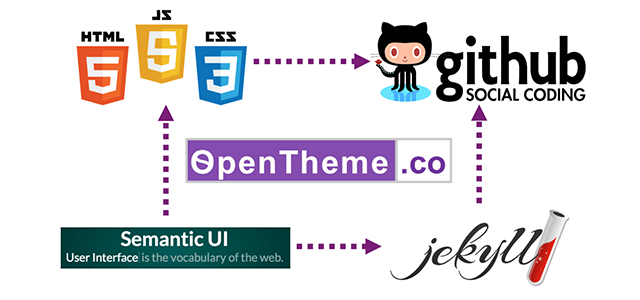Content Strategy For Startup Websites
How important is your website’s content strategy for your startup or small team?
Dec 15, 2014 • Manav Sehgal • ~ 3 min to read • feature content

How important is your website’s content strategy for your startup or small team?
OpenTheme content strategy can be a good starting point for your website. It promotes a product - a modern theme. The website addresses an active and vibrant target audience - GitHub community. OpenTheme showcases user experience best practices - Semantic UI. Websites built with OpenTheme use latest content workflow tool-chain including Jekyll and GitHub.
OpenTheme Content Strategy can be summarized as the 6-S guiding principles and the 6-R design goals.
The 6-S Guiding Principles
Snackable. Provide easy, quick views for your content.
Shareworthy. Design content that audience wants to reuse, share.
Semantic. Add structure and meaning to content. Allow humans and software to understand your content in the same way.
Speedy. Content publishing and presentation speedy and high performance.
Simple. Keep things simple. Authoring content should be intuitive, easy, and efficient.
Scalable. Scaling cost-effectively for bandwidth, compute, storage, and concurrency.
Blog Posts Used For Theme Tutorials
Long form theme tutorials or articles like this one are created using Markdown and rendered as blog posts. You can add following features by adding name: value pairs in the front of post content.
layout Change the layout of the post using one from _layouts folder.
image Add a post image. Recommend 640x300 size image which works well resized to thumbnail and when social sharing.
tags Add tags for posts related to a certain topic.
category Further classify post. This is also picked up as a folder hierarchy for creating SEO friendly urls.
author Post author name.
title Post title is picked up from here. Added to HTML meta and post masthead.
Conventions For Blog Posts
date Publish date for the post is now picked from file name following YYYY-MM-DD-Title-Of-Blog-Post convention. Also decides the folder hierarchy for pretty permalinks.
_config defaults You can set/change defaults for category, layout, author based on type and folder of post/pages.
Collaborative Data Driven Documents
Modern websites rely heavily on presenting structured data. As content authors, managing database servers, concurrency, performance, are concerns best handled by the platform. We want the flexibility to easily define, manipulate, and present our data structure.
One of the ways to achieve this on static websites is by using structured data documents served from GitHub.
OpenTheme demonstrates this feature to showcase custom plugins or reusable embeds.
You can see Semantic UI Card view for these embeds here. The data behind these embed is editable directly as a GitHub YAML Frontmatter document here.
This is the code used in post to add the above card.
{% include embed-cards.html cards=1 %}Adding a new card view with data from more than 10 structured key-value pairs is as easy as editing an outline-like text document.
GitHub Pages (Jekyll pre-processor) along with Semantic UI, take care of the front-end rendering auto-magically!
